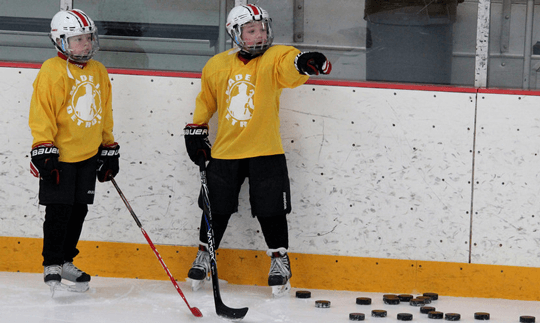Practice Makes Perfect: Are You Using Practice Time Efficiently?

How do you get your team properly prepared and ready to execute on game day?
Practice, practice, practice. But not all practices are created equal.
Do you run your practices effectively and efficiently? Are you making the most out of your limited practice time? Are your players engaged in their instruction and drills?
Let’s take a look at four tips to help you run an efficient practice and get the most out of your team:
1. Have A Plan
Practice doesn’t simply mean going out on a field and having your players run around and perform random drills. There is nothing worse than a practice that’s run like improvisational jazz.
Your practice time should be spent efficiently and effectively. Remember, the whole point of practice is to prepare your players for the upcoming season or game. And that means you need to have a plan.
Your plan should be well thought out and executed, based on past performances and the competition to come next. There should be a specific purpose behind every drill and it’s important to instruct your players on how these practice elements equate to actual game situations.
You can’t prepare by the seat of your pants. Having no plan is the quickest and most sure-fire way for your team to waste valuable time.
2. Keep ‘em Moving
While developing a plan for your practice, make sure you think about the flow of your drills. You want your players to always be moving in practice, both during drills and in between.
It’s important to limit drills that take too long. Players typically lose interest and end up spending too much time just standing around. Keep the drills short and your players moving on to the next thing right away.
Similarly, try not to spend too much time at the whiteboard explaining a complicated drill or breaking down the last game. That is time best spent before or after practice, not during. Your field, pitch, court or ice time is too valuable and needs to be used effectively.
3. Mix It Up
Your practice plan should also include a good mix of skill-based drills, instruction and competitive play — such as the Oklahoma drill or other battle drills.
This allows you to keep things light and moving, as well as touch many different areas in one practice. If you have multiple practices in a week, you may be able to dedicate certain sessions to specific areas, but most coaches don’t have that luxury.
Try to mix it all in with the time you do get, but make sure you’re not overwhelming your players either.
4. Make It Engaging
So, why is it so important to have a practice plan, keep players moving and mix up the types of drills? Because you need to keep your players engaged!
Sure, players are into practice and everything you’re saying at the beginning of the year; but once you get into the dog days of the season, practice may become tedious for players. You need to keep them engaged and keep their heads in the game … both literally and figuratively.
A practice that has players engaged — and that means participating, speaking up, performing at their top levels, encouraging their teammates — is a practice that has players learning. That’s a practice that players care about.
When your players don’t care about practice, your practice time has been worthless.
How do you use your practice time effectively? Have a plan, keep your players moving and make sure they’re engaged — that makes for a worthwhile practice.




 How do you get your team properly prepared and ready to execute on game day?
How do you get your team properly prepared and ready to execute on game day? 
